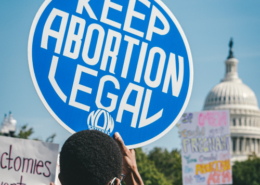In a separate Oct. 16 memo, Cathy Buhrig, associate administrator of the Agriculture Department’s Supplemental Nutrition Assistance Program, or SNAP, told state agencies it would be able to provide food stamp benefits through the end of December. Under the speaker’s proposed laddered spending bill, SNAP would be funded longer if passed.
States received its first quarter of Temporary Assistance for Needy Families, or TANF, funding at the beginning of October, which will be enough to fund the program through the end of the year. Should the money run out, many state agencies contacted by Route Fifty, including the Pennsylvania Department of Human Services, said they believed that they had enough money in hand to continue funding the program.
Spokespeople for social service agencies in Georgia, Louisiana and North Carolina were unwilling to speculate on the impacts of a shutdown for its low-income residents.
Maryland Gov. Wes Moore had announced ahead of September’s deadline that his state was willing to commit up to $1 billion of its $5 billion surplus to cover any dried-up federal funding stream. A spokesperson for the governor told Route Fifty that the state’s plans haven’t changed.
Still, should there be a shutdown, families in the state and particularly in other parts of the country will be spending the holidays worried about when food assistance might run out, said Michael J. Wilson, director of the community organization, Maryland Hunger Solutions.
“There's a happy picture of, ‘Oh, it's the holidays and people are going to be gathering together with their families for meals and good times.’ But that's not everybody's experience,” he said in an interview. The uncertainty will lead to “the psychological impact that ‘Oh, no, the government is going to shut down. Will I be able to feed my family?’ The trauma that millions of Americans and hundreds of thousands in Maryland are going to face is unnecessary.”
The uncertainty comes after a USDA report last month said the share of households who experienced food insecurity at some point last year rose “significantly” to 12.8% from 10.2% in 2021 and 10.5% in 2020. Those with very low food security also rose to 5.2% from 3.8%. In addition, 8.8% of households with children were also food insecure, up from 6.2 percent in 2021.
More women than expected have already been signing up for WIC benefits, leading states to ask Congress to approve more funding in next year’s spending bill. Keeping spending for WIC the same until January under Johnson’s proposal would exacerbate the fact that states are not receiving enough for the program in the first place. A shutdown will create uncertainty for state WIC agencies over how long they will be able to provide services before having to turn women away.
Sharon Parrott, president of the left-leaning Center on Budget and Policy Priorities, tweeted on Saturday that “states may start to cut enrollment by creating waiting lists & halting outreach.”
And even if there is a shutdown, states will be unsure how to proceed, said Kelly Horton, chief program officer for the Food Research and Action Center. “If you are a WIC director and you have to manage the caseload and the funding that is allocated to your state, you are in a very uncomfortable position of being unsure of what the current and future funding projections are going to look like.”
States, for instance, may feel the need to advertise the program so that women know the help is available, Horton said. But they would be “a little nervous” about attracting more families than they have money for.
Meanwhile, Republican Rep. Marjorie Taylor Greene of Georgia told reporters outside the U.S. Capitol last week that she is open to a shutdown unless Democrats agree to cut spending and enact border security measures. She downplayed the concerns of government workers being furloughed, noting that companies are having trouble hiring enough workers. “So anyone here in the federal government that’s upset because they have a delay in their paycheck,” she said, “they can go get a job in the real world.”
“We don't want to see interruptions in government because there are real effects on the ground,” said Johnson, Milwaukee’s mayor and a Democrat. “Our elected officials are here to do a job, right? It's their responsibility to get this stuff figured out so that citizens elsewhere across the country, including right here in Milwaukee, can rely on the services that the federal government provides.”
Debbie Cox Bultan, chief executive officer at NewDeal, a progressive network for state and local leaders, said that local officials that she has talked to are also worried the fighting will erode people’s trust in government. “There’s a self-inflicted wound,” she said. “The chaos that the Republicans are causing is just adding to this overall feeling that we send people to Washington who can't do their jobs.”
Many states contacted by Route Fifty declined to say whether they would furlough workers funded by the federal government. But California’s deputy finance director, H.D. Palmer, said in an email that, as was the case in September, the state is still not planning to furlough workers.
The American Federation of State, County and Municipal Employees said that those furloughed in the past work in areas like occupational safety and health programs, state Social Security disability claim offices, state public defense/military affairs, and state health and human services departments.
Among the possible consequences local governments could again face are disruptions to air travel. As they did in the 2019 government shutdown, Transportation Security Administration employees working without pay could call in sick. That could cause delays at airports, a third of which are run by counties.







